#lumholtz tree kangaroo
Photo

Lumholtz tree kangaroo (Dendrolagus lumholtzi) with joey
They are historically threatened by land clearing but this has been significantly reduced due to the declaration of their habitat as a world heritage area. They are able to persist in modified and cleared areas where there are corridors and linkages they can use. This tree kangaroo was photographed in one such area that is surrounded by cleared farmland.
📍 North Queensland, Australia
📸Jasmine Vink
#queensland#australia#down under#wildlife#wildlife photography#animal#lumholtz tree kangaroo#tree kangaroo
5 notes
·
View notes
Text

A Lumholtz's tree kangaroo (Dendrolagus lumholtzi) in Yungaburra, Queensland, Australia
by Gregory "Slobirdr" Smith
#lumholtz's tree kangaroo#tree kangaroos#macropods#marsupials#dendrolagus lumholtzi#dendrolagus#macropodidae#diprotodontia#marsupialia#mammalia#chordata#wildlife: australia#wildlife: oceania
60 notes
·
View notes
Text
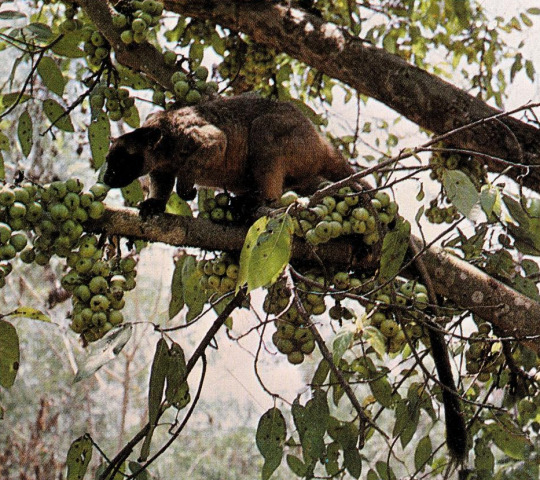
Lumholtz's tree kangaroo
By: Bruce Coleman, Ltd.
From: Simon & Schuster's Guide to Mammals
1982
#fave#lumholtz's tree kangaroo#tree kangaroo#marsupial#mammal#Bruce Coleman Ltd.#1982#1980s#Simon & Schuster's Guide to Mammals
50 notes
·
View notes
Text

Quick Tackle ref sheet. c:
#art#digital art#lumholtz's tree kangaroo#tree kangaroo#kangaroo#marsupial#artwork#animals#original character#original art#spacesuit#outer space
2 notes
·
View notes
Photo

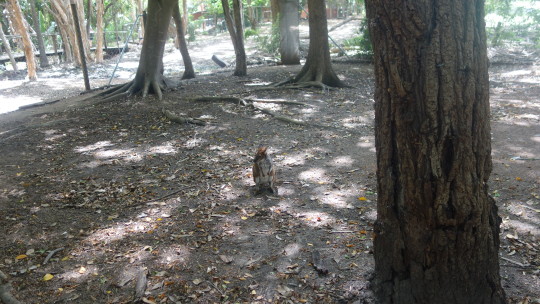
Lumholtz tree kangaroo and red-legged pademelon at Billabong Sanctuary near Townsville, QLD, Australia
4 notes
·
View notes
Text
Curtain Fig Tree National Park
Facebook
Twitter
Instagram
YouTube
Quick Facts
The Curtain Fig Tree is a species of Stranger Fig.
Curtain Fig Tree National Park protects a small area of an endangered type of forest, called the Mabi forest.
Mabi is the local Aboriginal (Ngadjon) word for the Lumholtz’s Tree Kangaroo.
Over 130 species of birds call this forest their home.
Part of our trip across the tablelands involved…
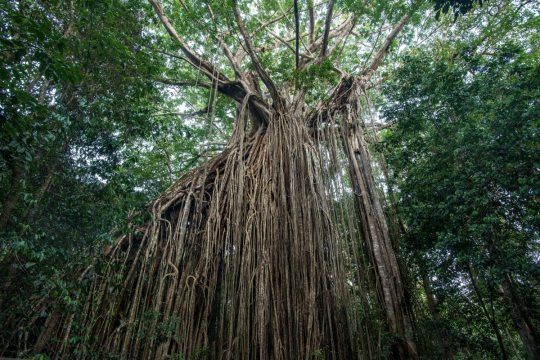
View On WordPress
#aboriginal#Australia#bird watching#Cairns#Curtain Fig Tree#Endangered#forest#Mabi#national park#nature#queensland#Road Trip#Strangler Fig Tree#tree-kangaroo#Yungaburra
2 notes
·
View notes
Photo
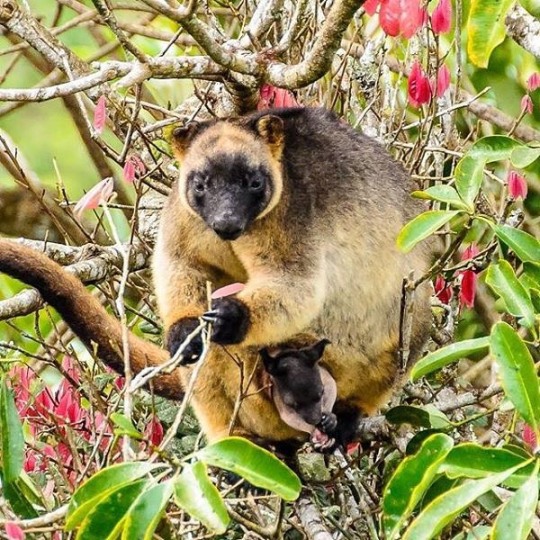
a mother Lumholtz Tree Kangaroo with a joey, Mt Quincan Crater, Queensland, Australia
#mt quincan crater retreat#mount quincan crater#volcanic#crater#lumholtz tree kangaroo#australian animals#australian wildlife#tree kangaroos#cute animals#baby animals#tropical#tropics#jungle#rainforest#nature#scenery#hiking#bushwalking#swimming#camping#mountains#forest#australia#rivers#creeks#waterfalls#Queensland
36 notes
·
View notes
Photo
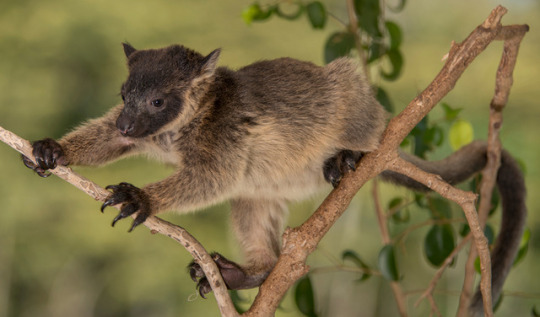
Lumholtz's tree-kangaroo (Dendrolagus lumholtzi)
Photo by Bill Hatcher
#fave#juvenile#lumholtz's tree kangaroo#boongary#lumholtz' tree kangaroo#tree kangaroo#Dendrolagus lumholtzi#Dendrolagus#macropodinae#macropodidae#macropodoidea#macropodiformes#diprodontia#australidelphia#marsupialia#metatheria#mammalia#tetrapoda#vertebrata#chordata#captive animal
11 notes
·
View notes
Text
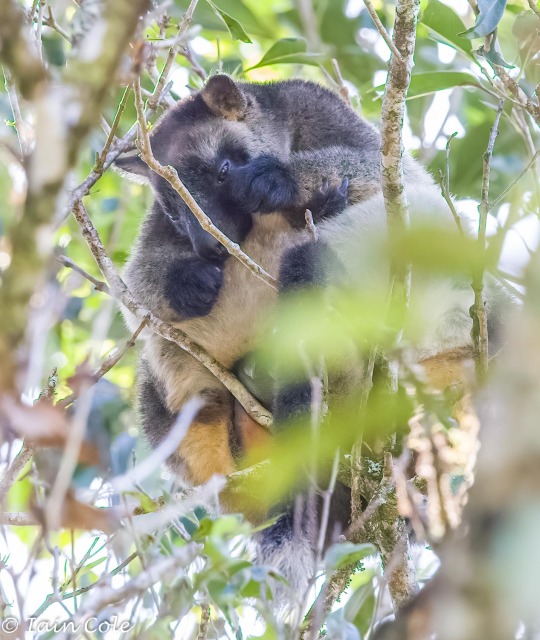
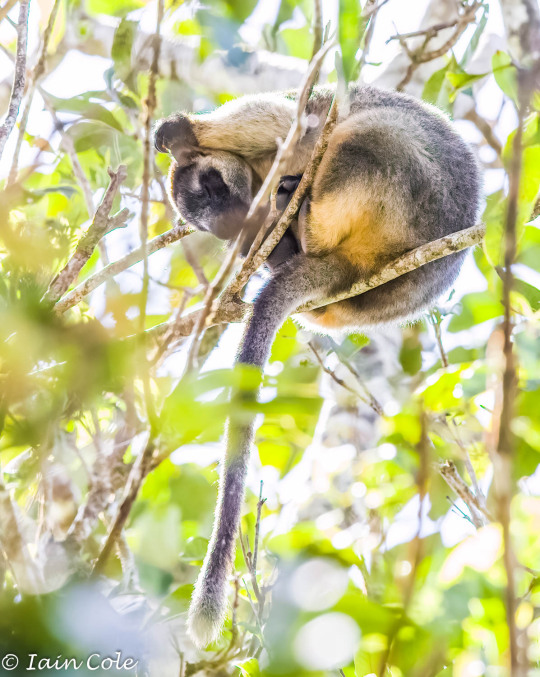
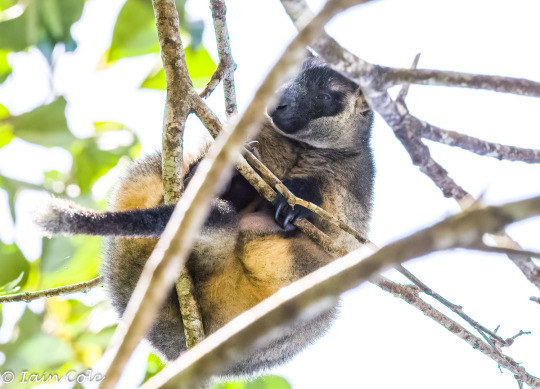
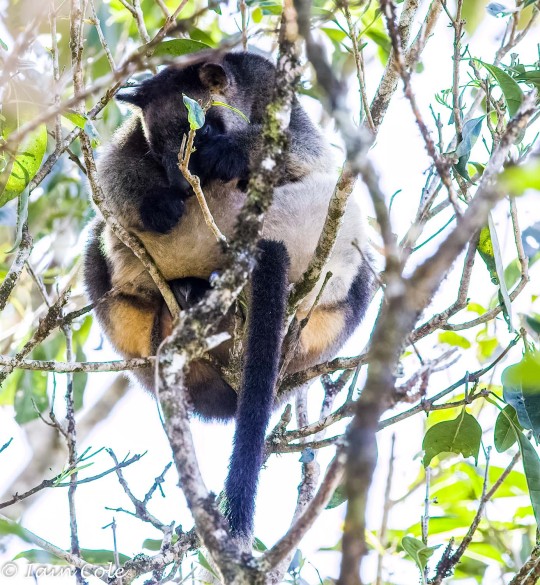
Muppie. Otherwise known as Lumholtz's Tree Kangaroo
(On my travels)
These kangaroos spend around 95% of their life in the tree canopy. Taken near Malanda.
#original photographers#nature photography#wildlife photography#Tree Kangaroo#marsupial#arboreal#australian native#Australian wildlife#Malanda
48 notes
·
View notes
Note
Top five animals (be very specific) (I hope no one's asked this yet)
kitty cat <2
imdont know enough animals is the problem and theres so many of them. funny monkey.
THERE WAS THAT ANIMAL I WAS OBSESSEDWITH . I CANT REMEMBER ITS NA,E. IT WAS A WRINKLED BEAST.. IT WAS MY DISCORD ICON FOR A GOOD QHIL. IT WAS LIKE IT WAS NAKED. NOT LIKE A NAKED MOLE RAT. BUT CLOSE. IT WAS SOME SORT OF RODENT BEAST THAT WAS A LITTLE BIT UGLY AND I WENT CRAZY FOR IT FOR A GOOD WHILE. BUT I CANT REMEMBER HIS NAME. IF ANYONE REMEMBERS TELL ME. ITS BEEN PLAGUING ME,
ferret!
extremely broad, but ive been into marsupials that looked fucked up as of late. except for kangaroos. ive hated them since i saw the inside of their pouch. except EXCEPT for (checks notes) lumholtz's tree kangaroo which i found when trying to find the name of greater gliders. that guy looks like a right funny weirdo
7 notes
·
View notes
Photo
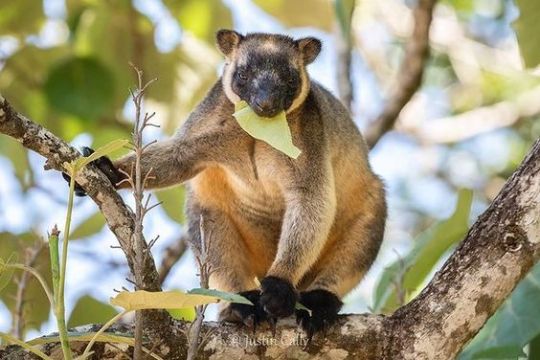
Lumholtz’s Tree Kangaroo (Dendrolagus lumholtzi)
The Lumholtz’s Tree Kangaroo is one of the two species of Tree Kangaroo native to Australia.
📸 @justin_cally
0 notes
Photo
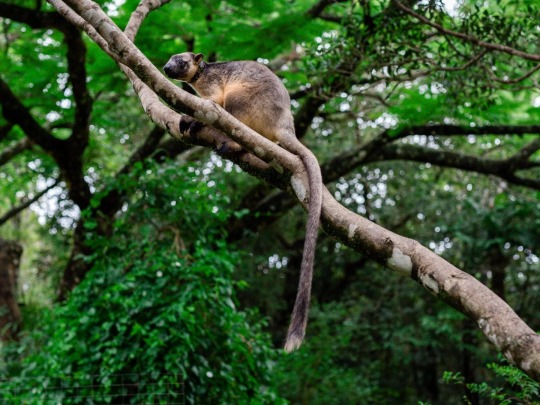
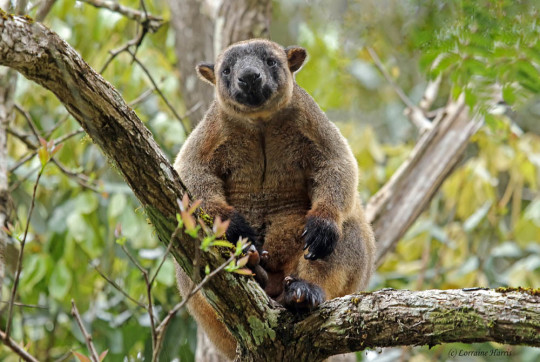
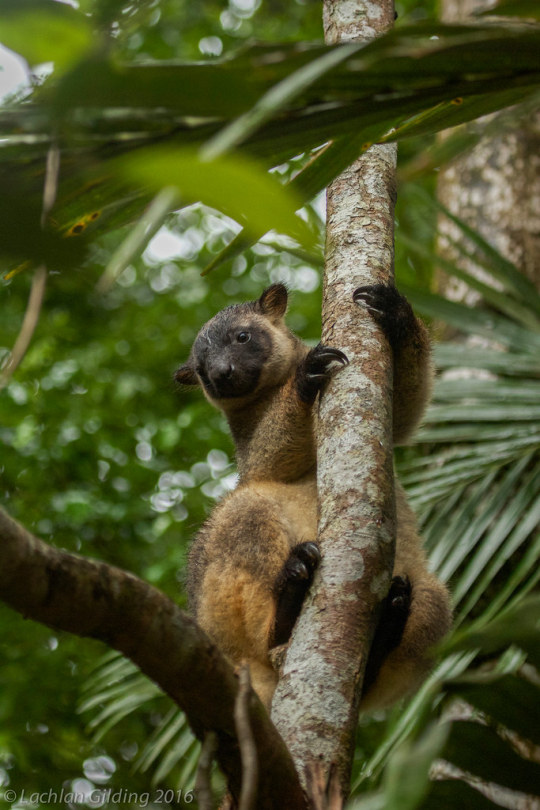

LUMHOLTZ’S TREE KANGAROO
Scientific name: Dendrolagus lumholtzi
Family: Macropodidae
Found in: Upland rainforests between Ingham and Mossman in Tropical North Queensland
Estimated wild population: Less than 10,000
Average size: Males 7.6kg, Females 6.3kg
See at: Rainforestation or Wildlife Habitat
17 notes
·
View notes
Note
Who's what in this or at least what you've figured out? I think this is really interesting!
!Warning Long Post!
Oh gosh really?! Oh thank you! I love it when people actually like it! I'm grinning like an idiot right now you don't even know!
Right so, I've actually figured out a lot of the characters, so this is going to be a bit of a long post, hope you don't mind.
O!Ciel - Eyelash Pit Viper
Sebastian - Northern Raven
Mey Rin - Northern Flying Squirrel
Finnian - White-Sided Jackrabbit
Bard: European Grey Wolf
Tanaka - Great Grey Owl
Lizzie - Sable Mitt Ferret
Madam Red - American Mink
Grelle - Ethiopian Wolf
Undertaker - Common Civet
Will - Zone-Tailed Hawk
Ronald - Marine Otter
Edward - Beauceron
Frances - Snow Goose
Alexis - Fjord Horse
Claudia - Ocelot
R!Ciel - Fennec
Othello - Scottish Wildcat
Alan - Russian Blue
Eric - Fallow Deer
Claude - Tasmanian Devial
Hannah - Mountain Lion
Soma - Silky Sifaka
Agni - American Black Bear
Lau - Lumholtz Tree Kangaroo
Ran Mao - Desert Night Lizard
Rachel - Pink-Headed Fruit Dove
Vincent - Honey Badger
Alois - Pen-Tailed Tree Shrew
Abberline - Arctic Fox
Joker - Ring-Tailed Lemur
Dagger - Wire-Haired Dachshund
Doll - Sugar Glider
Beast - European Rabbit
Jumbo - Cockatiel
Wendy - Fairy Possum
Peter - Golden Lion Tamarin
Snake - Paradise Tree Snake
Maurice Cole - Blue Morpho Butterfly
Joanne - Southern African Hedgehog
Bluewer - Elf Owl
Greenhill - Black-Backed Jackal
Violet - Spix's Disk-Winged Bat
Wolfram - Polar Bear
That's all I've got so far, still missing a lot of Weston Boys and the blue cult arc characters. And some of the green witch arc ones too!
9 notes
·
View notes
Text

Finished this guys ref sheet today. ☺️
Unless I give him accessories 🧐😆😅
#art#digital art#creature#tree kangaroo#australia#marsupial#mammal#original character#original art#Lumholtz's tree kangaroo#oc#oc art#reference sheet
2 notes
·
View notes
Photo
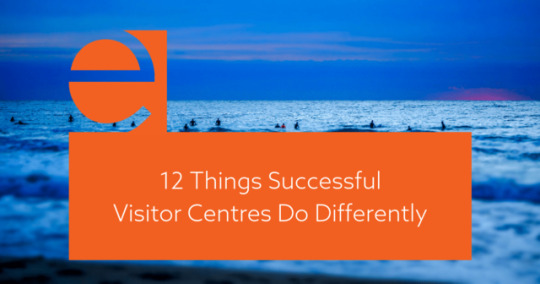
Home » Learning Hub
2 Things Successful Visitor Centres Do Differently
By Rebecca White
Published on December 4, 208
Visitor centres, and the value they contribute to their region's visitor economy, is a consistent challenge that many States and Regions of Australia are currently reviewing.
They are seen by many local government and tourism organisations as a significant cost line in an operating budget, with very little visible impact to the economy.
However through our work, training, research and conference case studies, we've found a number of examples of visitor centres who are adapting their services to remain relevant to their visitors, and as a result, adding real value to their local visitor economy.
So in this article, I've highlighted 2 things that successful visitor centres are doing differently, which can provide inspiration to other visitor centres both here in Australia, and globally.
. 'Visitor Servicing' not 'Visitor Information Centre' Focus
Successful visitor centres understand their centre is one of many touch-points that visitors are accessing to learn more about how to experience the destination.
They know this because they have a visitor servicing strategy.
It's a plan that guides all their activities, including the running of the centre, and is able to answer the following questions:
Who are our region’s Ideal Customers?
What is their visitor journey and online + offline touchpoints?
What are the information, inspiration and experience gaps in our Ideal Customer's Visitor Journey?
What gaps can our Organisation address?
Who else is supporting visitors in our region? eg Regional Tourism Organisation/Private Industry/Community Groups/Retail Traders/Local Residents
Where and how can we support these people / organisations / groups with their visitor
servicing activities?
2. Location Reality is Faced
Successful visitor centres who add real value to their local visitor economy understand the reality of their location.
They know many visitors will find the information and inspiration they need for their town/region, without ever stepping in their centre.
They understand that unless their centre is in a high traffic visitor location, or co-located with an attraction itself, numbers will continue to fall through their front door.
While every destination is different, below are three recent examples of Organisations moving their Visitor Centres to more strategic locations.
When required to move due to new light rail, Canberra Regional Visitor Centre relocated from the outskirts of town to Regatta Point which is in the heart of the key visitor experiences of the city. The building's location is also very importantly co-located with the National Capital Exhibition, which is a key visitor attraction that tells the City's founding story.
The new Mackay Region Visitor Information Centre move was prompted by the new Mackay Ring Road, which meant the loss of important northbound drive traffic to the region. Its new location is 33km south of Mackay in the refurbished Sarina Railway Station. However, most importantly it's co-located next to the popular visitor attraction the 'Sarina Sugar Shed', giving people more of a reason to stop and visit.
Melbourne had to find a new home for their Federation Square Visitor Centre due to new rail stations. Instead of replacing the single Centre, they are opening 2 Visitor Hubs at high visitor traffic locations of central city Town Hall and Victoria Markets, adding to their Visitor Information Network across the city.
3. Offer a Wow! Experience
Successful visitor centres know people don't come to their destination to visit a visitor centre.
Their visitors come to a destination for an experience.
Therefore they have ensured their visitor centre is a wow experience in its own right, especially if they don't have the opportunity to co-locate with a key visitor experience or high visitor traffic area (see
After covering the foundations of brochures, personalised service, maps, toilets, WIFI, they give visitors a reason to be there and something to rave about, both on and offline.
A couple of Visitor Centres doing this well include the newly opened Albany Visitor Centre. Since opening in April 208, it has become an attraction in its own right due to its free, three-minute virtual reality experience, where visitors can experience parts of the region they can't access any other way. Visitors love it, and are raving about it to other visitors, as you can see online!
The Southern Highlands Welcome Centre team put a lot of effort into delivering an engaging experience that encourages visitors to stay in the centre longer and learn more about the region. One of their initiatives was through their colourful public toilets which won the Best Economic Contributor category in the 207 International Toilet Tourism Awards. Low cost upgrades to make the toilets wow-worthy included flowers, posters, audio reel, quirky fact stickers and free WI-FI.
4. Custodians of Regional Stories
Successful visitor centres play an important role in telling the many stories of their Destination.
Stories that visitor centres could potentially curate and share with those who visit include:
People Stories – Indigenous, Early Setters, Historic Figures, and Living Icons
Place Stories – Indigenous perspective, Geography, Geology, Flora, Fauna, History and Heritage
Produce Stories – Local Industries, Food, Wine, Beverages, Craft, and Art
The stories a visitor centre chooses to tell will depend on what gaps exist in their wider destination experience, and also what stories will support the wider visitor experience in a region.
These stories are told through a variety of mediums (either high or low tech) based on the resources and space within a centres. They are also told through their retail offering in their Centres.
After the loosing their Centre to fire in 200, Malanda Falls Visitor Centre rebuilt their centre to refocus their storytelling around what visitors were visiting their region to see now, the rare and unique Lumholtz Tree Kangaroo. They also continue to work with the local Indigenous community to bring more of their stories into the Centre. The success of this storytelling can be seen in the rave reviews online and the Centre being rated as TripAdvisor attraction in the region.
Kapunda Visitor Information Centre in is home to the small yet engaging "Tase of the Region" interpretive centre in the basement of their Visitor Centre. The stories it tells helps visitors to have a richer understanding of the town and it's history. They also team up with the Kapunda Historic Society for guides who bring the town's rich mining and agricultural heritage to life for bus groups.
5. Address Marketing Failure
Successful visitor centres understand their role in the visitor economy food chain, and keenly identify new opportunities where gaps exist to support the experiences available in the destination.
Where market failure exists, and private industry hasn’t filled an experience gap or been able to activate a local public owned asset, visitor centres (and/or it's key funding organisation) step into fill an experience gap.
Examples include:
Walking Tours
Bike Hire
Group Tours
Hop on Hop Off Transport
Accommodation
Over time, when there is enough demand to demonstrate the product offering is commercially viable, they then enable private enterprise to take over the product's running.
Tourism Central Australia has done this successfully with their Alice Springs Walking tour. They started running the tours as a free service from the visitor centre, however after time, when demand was enough to show its viability, it was taken over by two private operators. They are currently planning on the same for a Hop on Hop Off bus service for Alice Springs.
Bendigo Visitor Centre runs a small group Food Fossickers Tour each Saturday, which was developed to fill the gap for Asian visitors to the town. The tour takes visitors behind the scenes to meet local food producers and taste and learn the stories of their products.
6. Digital Visitor Servicing Embraced
Successful visitor centres embrace the many online opportunities to help Visitors who prefer to find their information online.
They invest dollars, time and staff training to:
Manage online review + location based listings. They manage and respond to reviews and questions and answers for their visitor centre and also key visitor assets on TripAdvisor, Google My Business and Facebook.
Social Media. They use social media as a way to share their region’s stories, both inspiring and informing potential visitors. They may also invest strategically in targeted ads to drive bookings for time sensitive offers, such as events or relevant travel deals. It’s also a key channel for them to keep everyone informed at times of challenging events (such as bushfires, floods or storms).
Online Messaging + Chat. They provide visitor information via Live Chat on their destination website and social media direct message channels.
Regional Brochures and Factsheets. Their visitor guide / fact sheets / maps can be found on their own website / regional website and/or local government websites, in a mobile friendly format, with live website links and/or click to call phone numbers.
Website. Many manage their destination website to inspire, attracts and convert visitors in their region. If they don't own their website, they work with the relevant stakeholder to ensure the right content is on their website.
They also adjust their resourcing to support these tactics, as they need people with the skills and also time to support these activities
They also know it will be messy + potentially be a steep learning curve for team. To help with this, they invest in training for their visitor servicing teams.
Examples of Visitor Centres who are doing a great job of engaging with visitors in the digital space include Tourism Central Australia via Live Chat on their websites, social media and online review websites. The've also adjusted the teams rostering to cover early morning and later event shifts for Live Chat. Kununurra Visitor Centre manages an engaging destination website tells stunning visual stories on social media, which they curate onto their website.
7. Tourism Industry Engagement Focus
Successful visitor centres are active in engaging the local tourism industry, especially at a local level when their Centre is part of a larger destination.
They engage and collaborate with local industry in the following ways.
Industry eNews. They maintain an updated industry database, even if they aren't membership based, where they share a regular enewsletter with to local tourism operators. They keep them updated with upcoming events, training opportunities etc. They also include Sharing Economy operators in this database, as they understand they are also a key parts of their local visitor economy.
Staff Famils. Their staff regularly attend famils, so they can confidently talk about key experiences in the region, especially those relevant to their destination's Ideal Customers.
In-House Training. Local tourism operators are invited into the Centre to provide in-house updates to staff.
Networking Events. They host networking events at their Centre for local industry (if their Visitor Centre has the space). If they can't host, key staff attend relevant networking events.
Membership Prospectus. Depending on their organisation structure, they clearly communicate how local tourism operators can leverage the services at the visitor centre.
Other Visitor Centres. They engage with neighbouring and gateway visitor centres, keeping them updated with visitor guides and maps, famil invites and other cross region opportunities to better engage their visitors.
Influencer Outreach. They are proactive at training and getting visitor guides and maps to other visitor influencers, such as taxi drivers and Air BnB hosts.
While they are all membership based, Kununurra Visitor Centre, Tourism Central Australia all have fantastic industry prospectus's that clearly outline how local tourism operators can engage with their centres. Importantly, their membership fees are based on how much support a tourism business would like, not on the size of the business.
8. Residents, Retail Traders + Service Provider Engagement
Successful visitor centres understand how important residents, retail traders and supporting service providers are when it comes to influencing visitors to their region.
Examples of how they engage these different groups include:
Education Plan. They help educate service provides, such as retail stores, service stations, bakers they are all are part of local visitor economy. They are not protective of their patch as the sole owner of visitor information in their local town and wider region.
VFR Plan. They understand that Visiting Friends and Relatives is a major market which drives significant visitation to their destination. They encourage and enable residents to become advocates of their region by distributing visitor guides to residents, and even by developing specific campaigns.
Communication Plan. They engage local media and local government communication teams to share good news visitor servicing happenings/events in their region. They also seek out relevant community Facebook Groups and add value where possible, such as sharing of info about upcoming events.
Community Group Engagement. Depending on their region, they will have a staff member attend or sit on committees of local Progress Association/Retail Traders/Business Associations to support and cross leverage projects, events and other opportunities that activate their region's visitor economy.
Open Days. They host open days at their visitor centre or their organisation managed visitor assets to engage the community.
We love the work Southern Highlands Welcome Centre are doing through "This Month in the Highlands" videos, which showcases what's happening in the region that month. While it's great for visitors, it's also fantastic for educating local residents and traders.
Clare Valley Food, Wine and Tourism Centre has regular Friday Night Wine Tasting, which is attended by locals as well as visitors, while Canberra Regional Visitor Centre engaged locals when they moved to their new open location with a well attended open day.
9. Never Accept the Status Quo
Successful visitor centres are fantastic at asking 'why they do what they do'.
They are always reviewing everything they do.
They don't accept the status quo just because something has always been done that way, or it's too expensive or hard to change.
Or if there is a history of poor relationship with key stakeholders and their centre, they put egos aside to see how they work together to achieve the common goal of attracting, engaging and delighting more visitors in their regions.
While funds or resources may be tight, they get creative and try different things to better engage their visitors both on and offline.
0. They don't just Measure 'Reach' Metrics
Successful visitor centres know that traditional reach metrics only paint part of the picture of the true impact they are having in their region.
Traditional reach metrics can include:
# Visitors to their Centre
# Brochures Distributed
# Social Media Followers
# Website Visitors
While these metrics are good indicators of the success of a region's visitor servicing activities, it doesn't tell the full picture of visitor engagement with their activities or if they've turned any visitors into word of mouth advocacy for their region.
Other metrics they can monitor that will better measure the impact they are having in their region include (but not limited to):
Visitor Centre Visitors
Dwell time in Visitor Centre
Visitor Sentiment of Visitor Centre
Visitor Advocacy of their Visitor Centre
Over Counter Retail Sales
In Person Product Bookings
Online Engage Engagement Metrics
Download + engagement with digital visitor guides/maps/fact sheets
Online Bookings and/or Retail Sales
Engagement metrics of online platforms they have influence over (eg Facebook Engagement, Instagram Engagement, Website Engagement)
Local Community/Industry/ Events Engagement
Events attended
Growth in database of local residents
Engage/Conversion metrics with eNews
Local engagement on FB posts in community groups etc
They capture all the relevant data they can (such as using Google Analytics + Google Tag Manager, Social Media Insights, Review Sentiment, Manual Tracking) and use it to build a case for continued local industry + stakeholders support for their visitor servicing activities.
. Financially Sustainable
Successful visitor centres are developing multiple streams of income. They then test and tweak what works based on their resources and their local industry.
A goal for most Visitor Centre we work with or talk is to become more financially sustainable.
This is so they can reduce their reliance on public funds in their operational budget.
However their challenge is to maintain their reputation of offering up to the minute yet independent advice.
Various revenue streams successful Visitor Centres include:
Industry Contributions. Via their Industry Prospectus (see # 7 and examples), such has having brochures racking. Where resources are available, they also provide fee-for-service support, such as helping with ATDW listing set up, Google My Business and TripAdvisor Training.
Booking Commission. Via Online Bookings, Face to Face Bookings, Event Tickets, Owned Product Packaging + Distribution
Retails Sales + Gift Packages. Sold either offline (in VIC, at Events) or online via their Website.
Own Product Sales. Entrance Fees, Own Tour Products (only where market gaps exist see such as Guiding Service (groups), Hire, Transport, Walking Tours
Advertising Opportunities. In Centre - Posters, Window Projections, Touchscreen, Print.
Venue Hire. If they have venue space, hire it out for local events.
Albany Visitor Centre are heading towards a $00,000 profit from the Field of Light packages they have developed and are selling via OTAs and traditional trade partners. They also have various advertising opportunities in the centre for operators, such as advertising on their projector-lit visitor centre windows each night.
Lismore Visitor Centre offers online retail sales on their destination website of regional gift hampers.
Canberra and Region Visitor Centre negotiates to receive ticket allocation for major events or exhibitions when they are in town. They also do a roaring retail trade at their Floriade pop up store each year.
2. Strong Leadership + Management
We see a common thread in successful visitor centres of having both strong leadership and management in their centre.
This may be achieved by the same person, or a couple of people in their organisation.
Common examples we see include:
As a Leader, they take an active role in educating and inspiring the local industry and residents on the importance of the visitor economy for their town/region, so they get whole region's support in achieve their visitor servicing goals.
As a Leader, they build strong relationships and trust with their region's key stakeholder groups. This helps maintain or grow funding/resources to help activate opportunities in their visitor servicing strategy.
As a Manager, they are very willing to say no. They push back on anyone senior in their organisation who wants them to invest time / $$ / staff time in this "fantastic advertising / marketing tactic x/y/z" that doesn't align to their visitor servicing strategy (see point ) .
As a Manager, they know they can't do it all themselves. They work smarter, not harder, and look at creative resourcing of their existing staff/volunteers or activate other resources (eg other Council department staff or even Community Groups) to help deliver their visitor servicing strategy.
Over to you
We'd love to hear your thoughts and feedback in the comments on these traits of successful visitor centres
We'd love to hear specifically in the comments what your Centre is doing on the above list.
Are there any other traits we've missed that should be added to the list?
Filed Under: Destination Marketing Strategy, Destination Websites, Destinations, Storytelling + Content Marketing, Visitor Servicing + Visitor Experience
Rebecca White
Rebecca is a tourism marketing specialist and co-director of Tourism eSchool. Rebecca loves working with tourism destinations & operators to create sustainable marketing strategies. Her specialty areas are tourism marketing strategy, visitor servicing, visitor engagement, social media, customer advocacy, customer experience, content marketing & blogging.
Join the conversation about this article
0 notes
